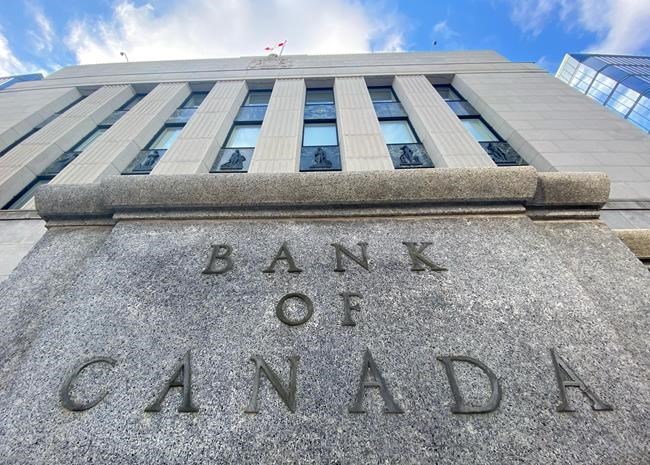OTTAWA — The economy appears to have avoided a worst-case scenario due to the COVID-19 pandemic, the Bank of Canada said Wednesday as it kept its key interest rate steady at its lower bound.
The bank left its target for the overnight rate unchanged at 0.25 per cent, which it has said is as low as it will go.
The bank also tinkered with some programs designed to ease the flow of credit, pointing to improving indicators in the market and the economy overall.
Overall, the central bank said Wednesday it believes the impact of the pandemic on the global economy has peaked, but hedged the outlook by warning of a high level of uncertainty about how the recovery will unfold.
Since the pandemic struck Canada and public health restrictions put a freeze on the economy in March, the country has seen historic drops in jobs and output.
The most recent federal figures on a key benefit for workers now show nearly 8.4 million people have applied for the Canada Emergency Response Benefit.
The figures are used as a proxy for the overall labour market, because the benefit is paid to anyone out of work or earning less than $1,000 a month due to COVID-19.
Statistics Canada's look at the May jobs market is scheduled for Friday and forecasts are for further job losses on top of the three million lost over March and April.
The central bank also updated its GDP forecast on Wednesday, foreseeing a decline between 10 and 20 per cent in the second quarter, compared with the fourth quarter of 2019, an improvement from the 15-to-30-per-cent drop in the quarter highlighted in the bank's worst-case scenario in April.
Economist Jim Stanford said the message the bank sent was that things are not as bad as it thought.
"We're still looking at an unprecedented downturn in employment and output, unlike anything we've experienced since the 1930s," said Stanford, director of the Centre for Future Work in Vancouver.
"This is still an economic and fiscal emergency, and I hope that people don't interpret the bank's statement as an indication that we can just get back to normal. That isn't going to happen for years."
The bank still expects the economy to grow in the third quarter of the year, crediting government spending and lower interest rates for "buffering the impact of the shutdown" and creating the foundation for a recovery. Even so, it noted the outlook for the second half of 2020, and after, remains heavily clouded."
"Anybody who believes we'll have a V-shaped recovery is, I think, grievously mistaken," Perrin Beatty, president of the Canadian Chamber of Commerce, told a Senate committee Tuesday.
He said getting the economy going again requires a national stimulus strategy that takes into account public health concerns to manage the pandemic, so businesses, workers and consumers feel safe to do business again.
The central bank's role in the recovery falls to Tiff Macklem, who began his tenure as governor on Wednesday, taking over from Stephen Poloz.
Macklem participated as an observer during deliberations by the bank's governing council, the bank's statement said, adding the new governor "endorses the rate decision and measures announced."
The next rate announcement is scheduled for mid-July, at which time the central bank will provide an update to the economic outlook it delivered in April.
BMO's Benjamin Reitzes wrote that any new ideas from Macklem will likely have to wait until then to be revealed, while CIBC senior economist Royce Mendes said even with a new policy stamp, there is "a lot of work still left to be done to bring the economy back to life."
The central bank also said Wednesday it was reducing the frequency of its term repo operations and purchases of bankers' acceptances, citing improvements in short-term funding conditions.
Other programs to purchase federal, provincial, and corporate debt will continue unchanged "until the economic recovery is well underway," the bank said, but added it could change tactics in response to economic conditions.
Provincial and corporate bond programs are scheduled to last a year. RBC senior economist Josh Nye wrote in a note that it's hard to see the bank easing up on its $5 billion weekly federal government bond purchases over that time.
The bank could be looking at purchases beyond next year, Stanford said, suggesting a "well underway" recovery may take years more to arrive.
This report by The Canadian Press was first published June 3, 2020.
Jordan Press, The Canadian Press



